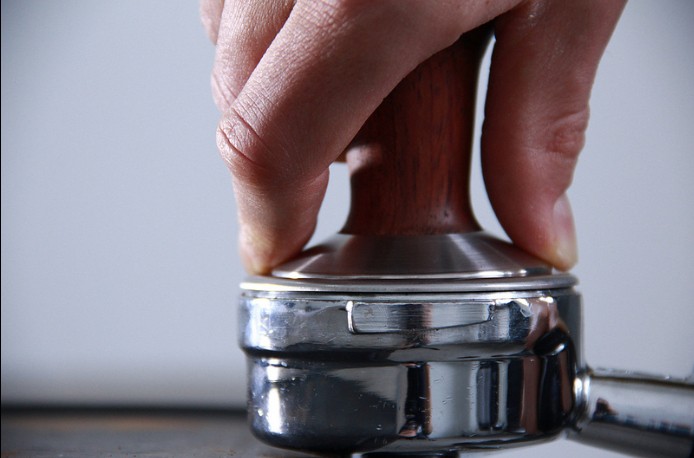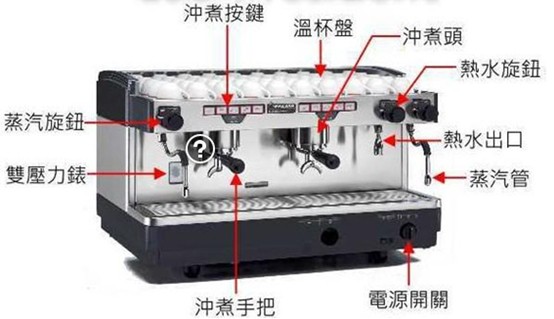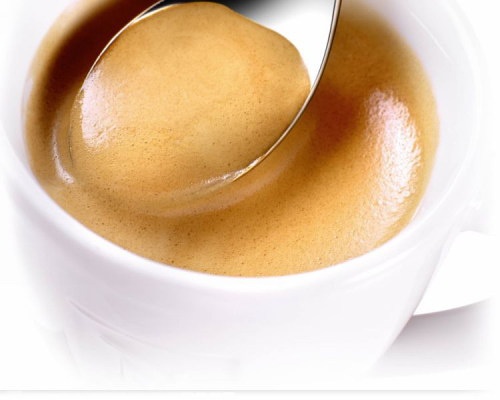China Coffee Network teaches you coffee bean extraction area and extraction time what water can extract and when to boil.
There are many factors that affect coffee extraction. Baristas need to control these factors reasonably before they can get the perfect coffee and produce the taste they want. today, the barista barista training teacher in Chongqing will tell you about controlling the time and area of coffee extraction to meet the extraction requirements.
Extraction time and extraction area are closely related and inseparable in any cooking method, and you can't change one of the variables without touching the other.
Extraction time (Time)
If you increase the contact time between water and coffee powder, more flavor substances will be extracted. If the water comes into contact with the coffee long enough, the extraction will continue until no more is dissolved. All we have to do is to find out when the extraction reaches the best flavor value.
With regard to the variable of extraction time, there are actually two different aspects that need to be considered separately. The first point is what water can extract and when to start extraction, which basically depends on the contact time between water and coffee powder; the second point is whether water can successfully extract flavor substances from coffee powder, which is related to both extraction time and extraction area.
What can water extract? when does the extraction start?
The soluble ingredients in coffee all have different solubility. Salts, sugars, acids, phenols, fats and lipids all take different time to dissolve in water. Some begin to dissolve as soon as the water comes into contact with coffee powder, while others may have to wait a little longer. We need to take these situations into account when brewing coffee, because changing the contact time between water and coffee will affect the amount of soluble matter that is dissolved. The easiest and first parts of coffee to be dissolved are fruit acids and organic salts (which bring light and bright fruit flavors); this is followed by light aromatic substances produced by the Mena reaction and caramel reactions (flavors such as nuts, caramel, vanilla, chocolate, butter, etc.); and finally, heavy organic matter (bringing wood, ash, malt, tobacco, etc.).
The most common mistake people make is too short extraction, too short extraction is likely to sacrifice sweetness.
Extraction area (SurfaceArea)
Increasing the contact area between coffee and water makes it easier for water to extract flavor substances. When you grind the coffee into powder, the surface area of the coffee increases exponentially.
You can think of coffee beans as a cube with 1cm sides, with six faces, each with an area of 1cm ², so the surface area of this cube is 6cm ².
Cut the cube in half and then in half. Until you get eight small cubes. At this point, the side length of each small cube is 0.5cm, the surface area is 1.5cm ², and the total area of the eight small cubes will be 12cm ², which increases the surface area that water can contact. It didn't take long for us to double the extraction area.
Then let these small cubes undergo a rough grinding to get 64 small cubes with side length of 0.25cm. The surface area of a single small cube is 0.375cm2, and the total surface area becomes 24cm2. It's doubled again!
In the usual Italian grinding case, the cube of 1cm will be crushed into hundreds of small particles, and you should be able to imagine how the extraction area of coffee will be multiplied. With the rapid increase in the surface area of coffee extraction, it becomes easier for water to dissolve most of the flavor substances in coffee.
In these hypothetical small cubes, there are a large number of flavor substances that can not be immediately touched by water. This is why thicker coffee powders take more time to extract than finer ones: it takes some time for water to get inside these thicker coffee powders, which are then dissolved and transported to external solvents. When it comes to fine powders, all the water has to do is touch them, and everything will be dissolved. With this comparison, you should be able to understand how important the extraction area is in increasing extraction.
The most important thing I want to tell you here is that the thickness of coffee powder does not change the substance being extracted. The only thing it does change is when these substances are extracted. All the flavor substances are there from beginning to end, and they have been preserved in coffee beans waiting to be extracted. Grinding finer or thicker just allows water to come into contact with more or less flavor substances in the first place.
We can also think differently about the extraction area: when we think about how to adjust the degree of grinding, we are actually thinking about "how many coffee flavor substances do you want to hide away from water contact?" or "what percentage of flavor substances do you want to be delayed?" . The finer powder can hide less flavor, which will reduce the delay effect, while the thicker powder will hide more flavor substances and enhance the delay effect.
When you want to increase the extraction, you grind the powder finer, which increases the extraction area of the coffee powder and exposes more of the coffee flavor to the water. When you make this adjustment, your extraction will be improved because water can capture more flavor substances and dissolve them more quickly.
Remember: all the flavor substances are always in the coffee powder waiting to be extracted, and the purpose of increasing or decreasing the surface area of the coffee powder is to bring them closer to or further away from water.
How easy will it be to extract water?
If there are many coarse powders, it will be difficult for water to enter the interior of these powders to dissolve flavor substances. Water needs to pass through an intricate maze of cellulosic tissue to reach the flavor substance and come into contact with it for a certain period of time to dissolve what we need, and then the water brings the dissolved substance to the solvent outside the coffee powder. Coarse powder will require relatively more contact time, this is because it takes more time to complete these three steps. For example, stage (1) the extraction of outer substances takes 1 unit time, and stage (2) water enters and comes into contact with most flavor substances, it takes 1 unit time Stage (3) it takes 1 unit of time for the water to bring out the dissolved flavor, and if the flavor is hidden in the depths of the large coffee particles, it may take three times as long to extract it, but in the process, the outer part of the coffee is still being extracted, and it is likely to be far beyond your expectations.
What does all this mean for Espresso?
When you make Espresso, you only have about 30 seconds to extract, which means that those large coffee particles are actually useless "fillers" that cannot be extracted thoroughly or evenly. Espresso coffee powder particles are usually very small so that water can extract enough flavor substances in a short period of time. It is very important to use EK43 or other similar flat knife grinding when making Espresso, because the particle size distribution of the powder is more uniform, thus ensuring the consistency of most (or even all) flavor substances in contact with water in such a short extraction time.
What does it mean for filtered coffee?
We use much thicker powder when making filtered coffee (such as French pressure or hand-brewing), and the reason for this is mainly related to the contact time of gouache. The extraction time of filtered coffee is much longer than that of Espresso, because the extraction of filtered coffee mainly depends on the gravity of the water itself, and the speed of water passing through the coffee powder is much slower than that in which the Italian coffee machine relies on a water pump to provide high pressure so that water can penetrate the coffee powder and filter bowl in a short time. Because the extraction time is longer, when making filtered coffee, we should hide the flavor substances in the particles as much as possible to avoid excessive extraction.
While you are waiting for the flavor substances inside the larger particles to be extracted, the smaller particles are still being extracted and will not stop. So you need to decide whether waiting is really good for you to get more extraction from these large particles, or whether waiting will cause small particles to be overextracted (bitter and dry).

Important Notice :
前街咖啡 FrontStreet Coffee has moved to new addredd:
FrontStreet Coffee Address: 315,Donghua East Road,GuangZhou
Tel:020 38364473
- Prev

How to clean the espresso machine Oscar regular cleaning correctly clean the espresso machine
It has been more than a week since Oscar moved home from a single cup, and it is estimated that there are more than 20 cups, so he is going to clean it up this afternoon. The daily cleaning and maintenance of Italian coffee machine is mainly recoil and remove some parts for soaking. Recoil is a way to clean the waterway of coffee by using the pressure generated by the coffee machine and cleaning powder. Meaning
- Next

Espresso understand how espresso and controlling crema make espresso crema better
Knowing more about crema can not only improve the ability of baristas to make coffee, but also help to improve the method of making espresso, so that guests who come to cafes can fully experience the charm of a perfect cup of coffee. Today, follow the Chongqing Barista barista barista training teachers into the espresso crema, in-depth understanding and control of espresso crema, promotion
Related
- What documents do you need to go through to open a coffee shop? coffee shop coffee shop certificate processing process
- How to purchase Coffee beans in small Cafe how to choose a suitable supplier for domestic Coffee supply Company
- How to drink Starbucks Fragrance White Coffee? how to make Australian White Coffee? what Italian coffee beans are recommended?
- The Story of Flora Coffee: the name of Flora Coffee Bean and the implication of the Flowers on Florna Coffee
- How much does a cup of coffee cost? How much is the profit of a cup of coffee? What is the profit of the coffee shop in a year?
- Yunnan small Coffee, known as "fragrant Coffee", introduces the characteristics of Alpine Arabica Coffee producing areas in Yunnan, China
- 2023 latest Starbucks full menu price list how much is a cup of Starbucks coffee what is better to drink the most popular hot and cold drinks recommended
- Starbucks different kinds of Coffee Price list Starbucks menu 2023 Top Ten Best drinks in Starbucks
- Starbucks Spring praise Comprehensive matching Coffee Bean theme Story Packaging implication and taste description
- The cost of a cup of coffee latte American coffee cost price and selling price

